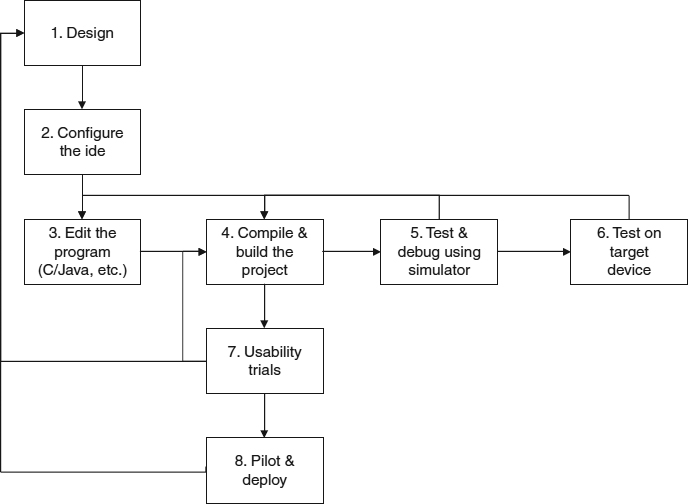11.4 EMBEDDED DEVELOPMENT TOOLS
Developing a mobile service is not just a question of choosing which programming language to use. The available API set will also influence the decision. As with most computing platforms, the richness of APIs on mobile devices is continually evolving, as is the architectural model that we developed in Chapter 10. New and exciting services are possible on an increasingly wide range of devices.
For certain applications, some platforms are better than others. For example, for secure enterprise connectivity, we might want devices with keyboards or built-in enterprise productivity tools, like a word processor. Perhaps a Windows Mobile device or something like the BlackBerry would be suitable. Developing a secure enterprise application on a BlackBerry will almost certainly dictate an embedded approach, particularly if we want to push data to the device asynchronously of user requests. The BlackBerry has an API to do this and a programming model on the device that supports the concept of listening for push messages. The OS manages this service for the service layer applications. Whatever the reason to use an embedded approach, the development process is usually the same for all devices and is summarised in Figure 11.4.

Figure 11.4 Typical process flow for embedded mobile application.
Let's briefly examine the development process and outline its constituent ...
Get Next Generation Wireless Applications: Creating Mobile Applications in a Web 2.0 and Mobile 2.0 World, 2nd Edition now with the O’Reilly learning platform.
O’Reilly members experience books, live events, courses curated by job role, and more from O’Reilly and nearly 200 top publishers.

